
When you think about designing your dream home, the aesthetics tend to steal the spotlight—gorgeous countertops, eye-catching lighting, and stylish furniture. But the true magic of a home lies in how well it functions for you and your family. A beautiful house that doesn’t support your day-to-day life will eventually feel frustrating. That’s why smart planning and thoughtful design decisions are critical from the start. Here are six musts to create a home that works as beautifully as it looks.
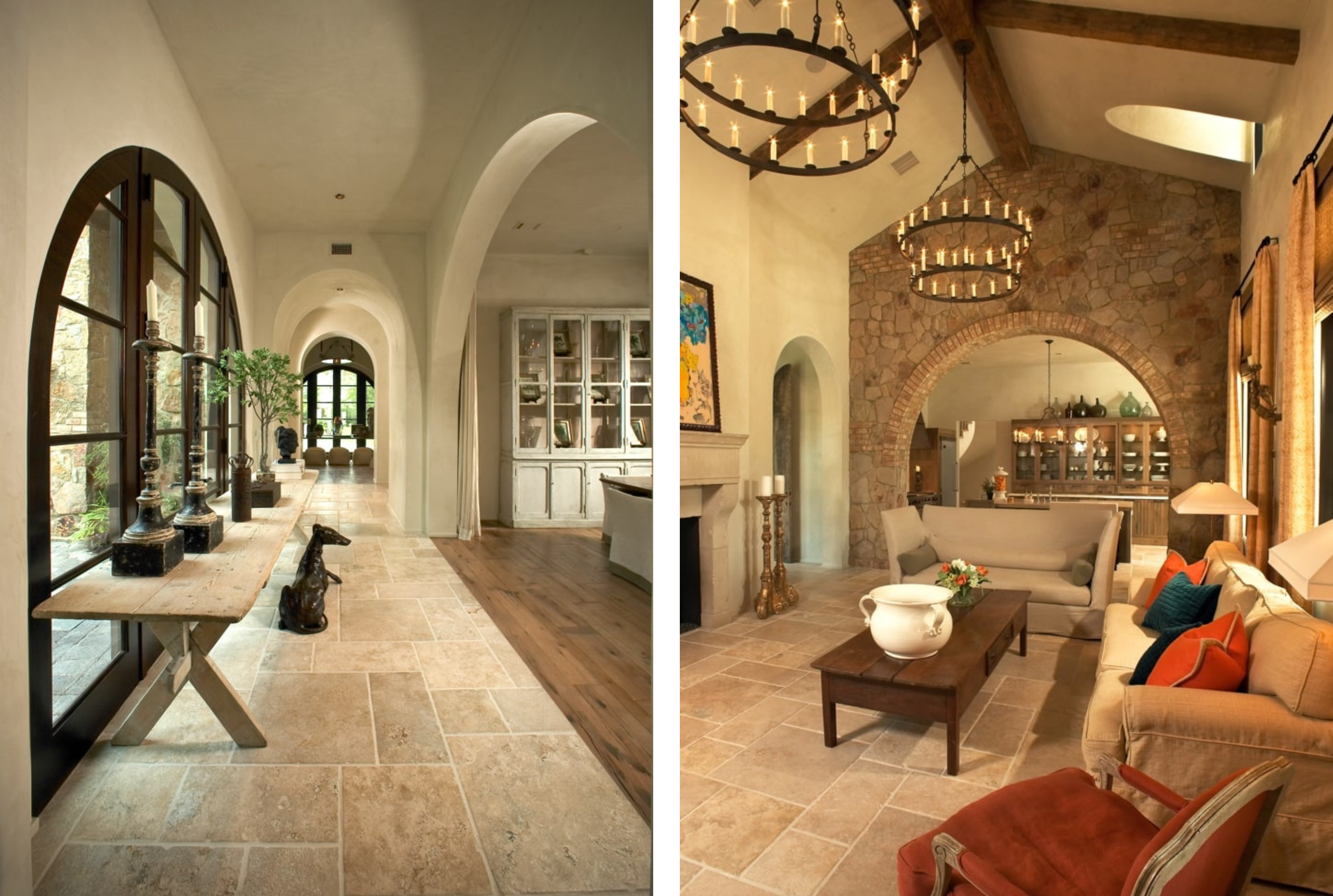
1. Take Your Time with the Floor Plan
The foundation of a well-functioning home begins with a floor plan that supports your family’s daily life. Take your time collaborating closely with your Dream Team (architect, custom builder, and interior designer) to get your floor plan just right before moving on to developing construction drawings.
- Be Practical: Make a list of must-have rooms and a separate list of like-to-have rooms, and prioritize incorporating the spaces that matter most. For example, if you know you want your family to be together most of the time, don’t design several separate hangout spaces (theater, gameroom, playroom, etc.). Instead, consider designing a large Living/Great Room that has distinct areas within it, like a game table in the corner, a nook for reading or drawing, an adjacent play space hidden behind pocket doors, and a cozy TV-watching area.
- Think Through Routines: Take time to list out your family’s daily habits and needs. What appliances does your family use to make breakfast in the mornings? Do you work from home? Does your family host gatherings regularly? Do your kids need a place to drop backpacks and sports gear? Then let these routines inform your floor plan. For example, if your mornings revolve around getting kids out the door quickly, consider a mudroom with built-in organization that is situated along the path towards where your car will be parked most of the time.
- Make Essential Spaces Accessible: Avoid sticking essential rooms like home offices, laundry rooms, or playrooms in remote corners of the home. Those spaces will only be used easily if they’re accessible and integrated into the way your family actually lives. For example, kids will ALWAYS want to do their homework in the kitchen to be near the action and near the snacks, so to avoid a constant mess of schoolwork, consider incorporating a homework/craft/hobby room that is located right next to your kitchen. Include multiple workspaces as well as sufficient storage for all school/art supplies, and make this space snack-friendly if you’re ok with that.
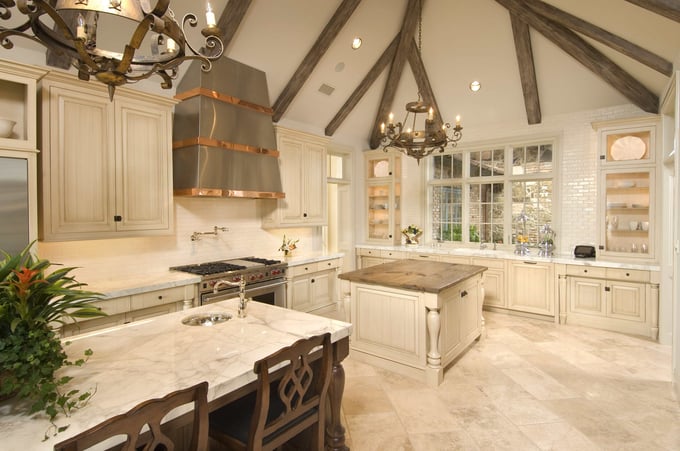
2. Utilize Your Spaces Efficiently
Square footage is expensive—be intentional and strategic to make every inch count.
- Be Strategic with Room Sizes: Take the time to do your research on room sizes. Visit completed homes and find out their room dimensions so you can figure out the sizes you want/need. Avoid making bedrooms too large. The reality is that very little time of the day is spent in bedrooms, so having ones that are too spacious adds to the cost of building, furnishing, and maintaining your home.
- Go Multi-Functional: Rooms can do double duty. For example, a guest bedroom can double as a home gym, a future nursery, or an additional home office space if needed. Consider built-in and/or convertible furniture to add layers of extra usability to any room.
- Use the Awkward Spots: That nook under the stairs or sliver of space by the kitchen could become a reading bench, coffee bar, wine cabinet, secret hideout, or extra storage. And nearly any window can present an opportunity for a cozy window seat. A little creative thinking and thoughtful innovation can make use of nearly all awkward square footage in your home.
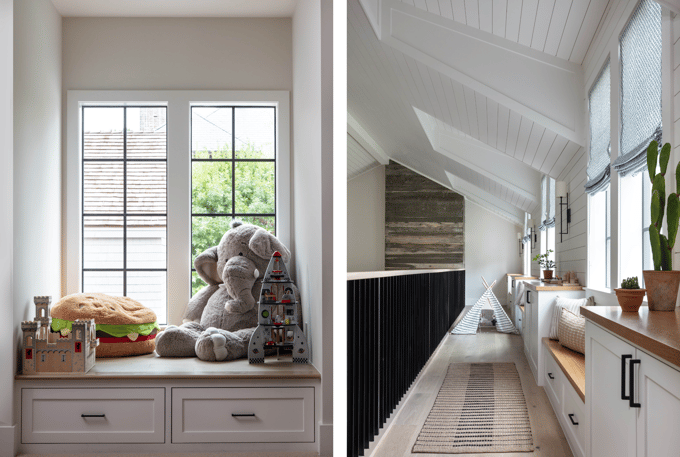
3. Design for the Present and the Future
Your family won’t always be in the same season of life, and your home shouldn’t be locked into one either.
- Plan for Change: Be sure to think long-term when planning how you will utilize the spaces in your home. A room used as a playroom today could easily transition into a study or hangout space in a few years. Maybe you’re in the thick of raising little ones now, but how will your home feel when you’re an empty nester? Are all of the common areas in close proximity to your bedroom so your house will always feel homey and well laid out for as long as you’re living there? Make decisions with your family’s evolution in mind.
- Think Universally: If you’d like your house to be your forever home, be sure to incorporate Universal Design elements throughout it. Consider wider doorways, curbless showers, and a first-floor bedroom. These design choices support both young kids and aging adults, making your home more accessible to all. For more information about layering Universal Design elements into your home, download our free checklist here.
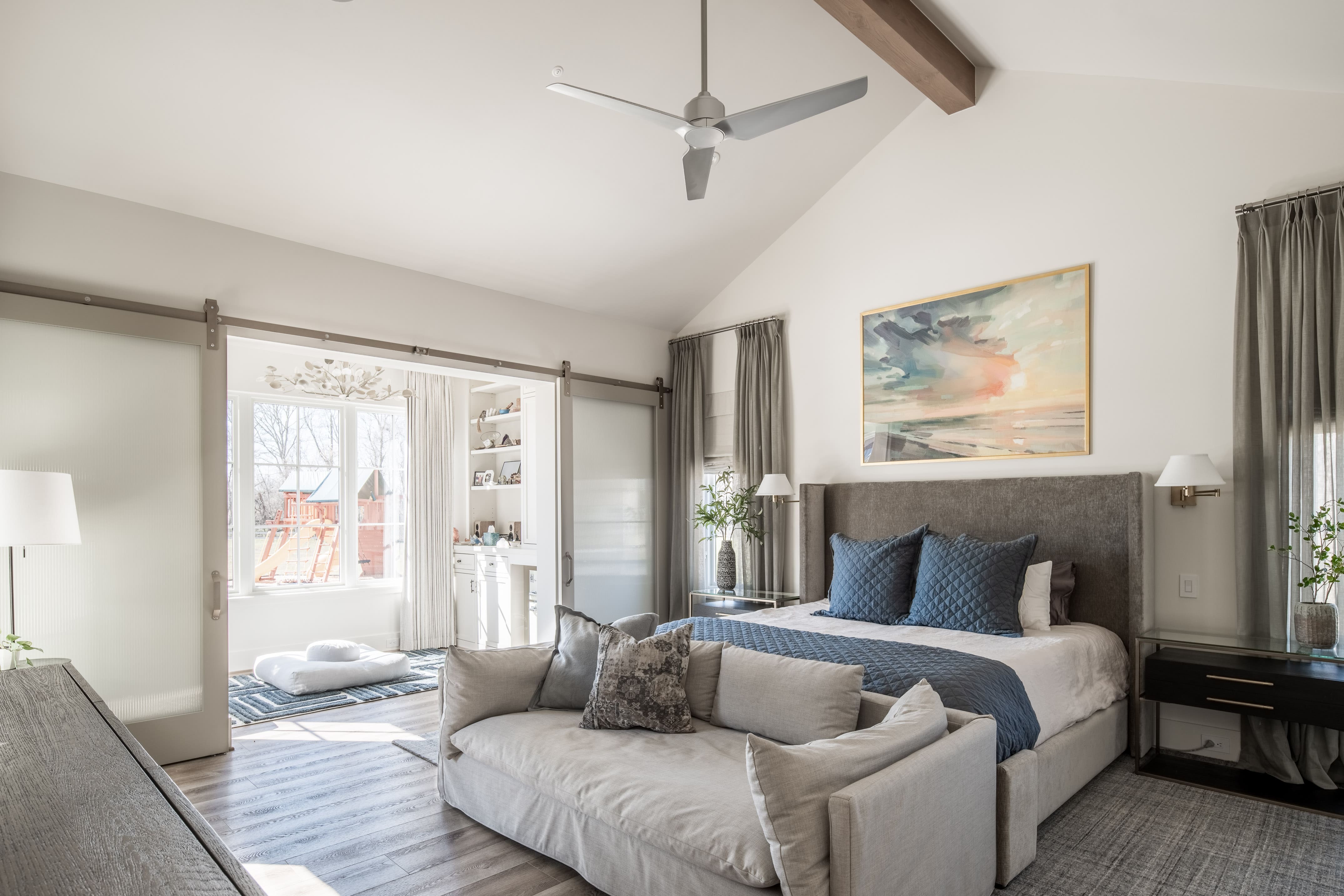
4. Be Intentional About Lighting Design
Good lighting is one of the most overlooked yet impactful aspects of a well-functioning home.
- Balance is Key: A mix of natural and artificial lighting is crucial. Place windows to invite sunlight throughout the day, but don’t skimp on overhead, task, and accent lighting to keep spaces comfortable and usable after sunset.
- Consider a Lighting Designer: If your custom home is complex and there is room in your budget, consider collaborating with a lighting designer. They will approach your home’s lighting with a holistic lens, integrating various light sources throughout every space in order to create your preferred ambience, accentuate architectural features, and highlight particular accessories or art pieces.
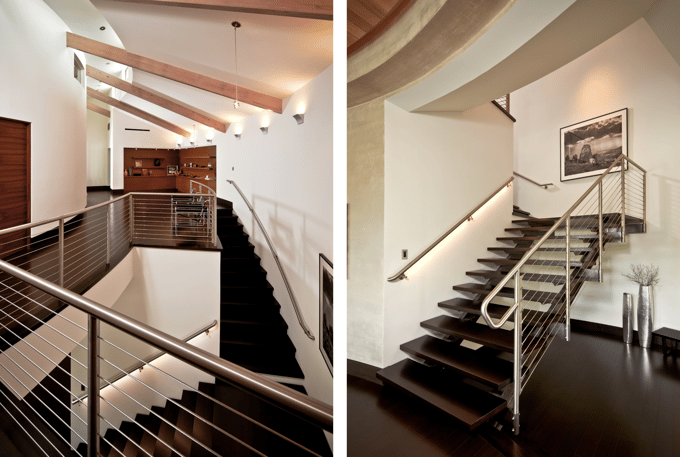
5. Incorporate Strategic Storage Solutions
A cluttered home is a stressful home. Thoughtful storage makes life easier—and tidier.
- Everything in Its Place: Take inventory of everything that you have in your current home that will need a place in your future home. Take the time to map out exactly where everything should go in order to make it accessible and usable. Then, design storage with specific purposes in mind: backpacks, seasonal decorations, pet supplies, cleaning tools, small appliances, etc. This keeps daily chaos under control.
- Future-Proof Your Storage: Choose storage that can evolve with your family’s needs. Be thoughtful about what kinds of daily items you may need as your family grows. If you take the time to plan with your architect and interior designer during the architectural design and preconstruction phases, then you can be sure everything will have its proper place in your home for years to come.
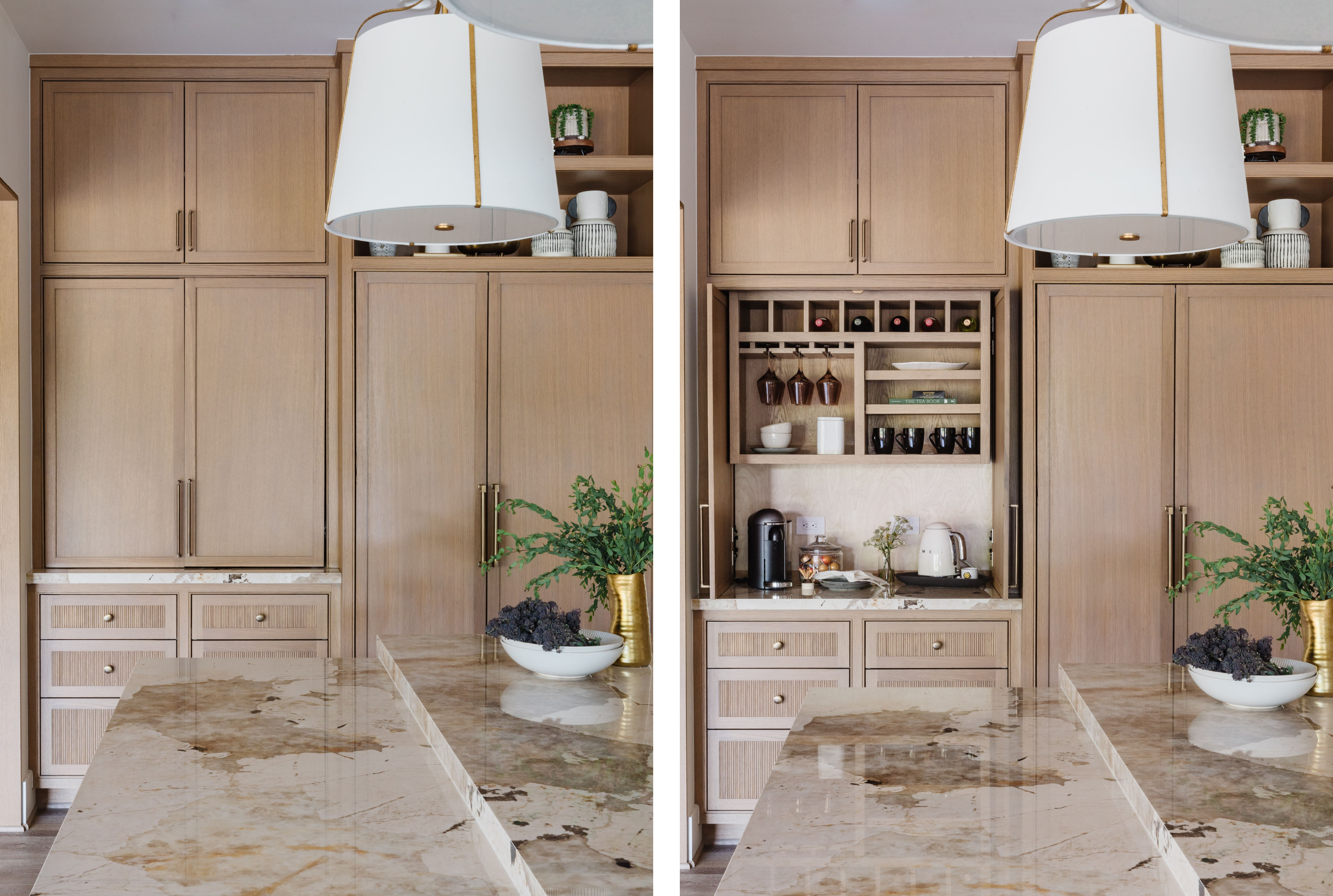
6. Choose Finish Selections Wisely
Finishes define your home’s personality—and they also determine how well it ages.
- Durability & Maintenance: Go for materials that can handle real life; messy kids, pets, spills, and all. Durable materials will hold their value for longer and cause you fewer headaches in the meantime.
- Classic Over Trendy: Trends come and go, but timeless design provides long-lasting appeal. Your interior designer can help you identify which elements of your inspiration images are classic vs. trendy. If you’re attracted to a particular trend, ask your designer to layer that into non-permanent elements, such as furnishings, textiles, light fixtures, paint colors, and hardware. Try to stick with classic materials for “built-in” elements, like tile, plumbing fixtures, countertops, and flooring.
- Let Your Personality Shine: Your home should reflect who you are and what brings joy to you and your family. Stay focused on what YOU are attracted to, regardless of how that might be received by visitors.
- Neutral Base, Bold Layers: Keep your foundational selections (like flooring, tile, countertops, and cabinets) neutral, and then add your unique personality through the finishing layers of your design (like rugs, art, furnishings, window coverings, and accessories). These are easier (and less costly) to change over time.
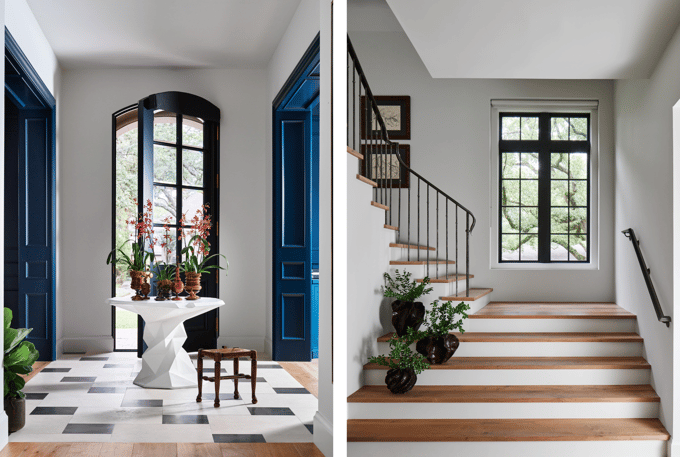
A well-functioning home doesn’t happen by accident—it’s the result of smart planning, thoughtful design, and intentional decisions. Whether you're building from scratch or renovating an existing space, following these six musts will help ensure your home serves your family beautifully, for today and every tomorrow.




COMMENT ON THIS ARTICLE